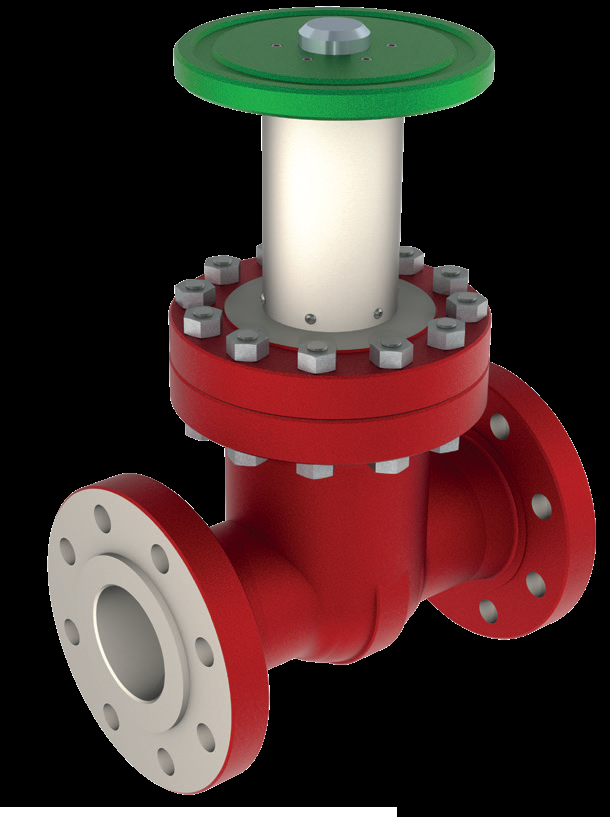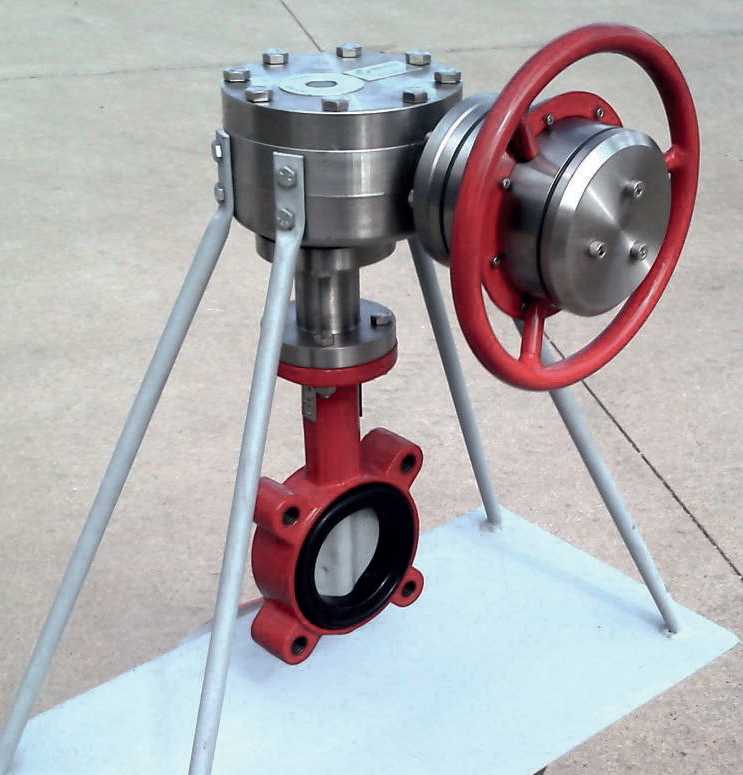Fugitive emissions are a huge problem resulting in environmental fines, lost product, and even loss of life in extreme cases. What is even more surprising than the impact of fugitive emissions, is that the majority of these leaks can be eliminated by fixing one problem.
By David Yakos, CTO – MagDrive Technologies
Leaking valves are the number one source of fugitive emissions. Within the oil & gas industry, leaks from valve packing chambers account for roughly 60% of fugitive emissions as valve packing creates a dynamic seal at the stem which is prone to leak. Over 90% of leaks from valves can be attributed to leaks around the valve stem and packing. As regulations tighten, breakthroughs in technology provide operators with the ability to monitor and locate leaks. Over the past years, there have been many advancements in low-emission valve manufacturing and packing that work to mitigate this serious problem. Now, rather than treating the symptom, the problem can be eliminated at its source.
Innovative Advancements
It is now possible to move from low-e to no-e, and eliminate the dynamic seals that create a leak path to the atmosphere through magnetic actuation.
Magnetically actuated valves have a solid wall that completely encapsulates the valve stem which is operated through a magnetic coupling. When considering safety concerns with lethal services, environmental hazards, or maintenance nightmares with chronic leakers, one immediately begins to realize the benefit of no-e magnetically actuated valves.
Advancements in magnetics, and new mechanical discoveries, have allowed for applications to be fabricated for high pressure and high torque requirements as well as a wide range of temperatures; from cryogenic to high heat. Magnetically driven valves have now been validated through some of the most stringent API tests and applications verifying the true potential of zero emissions through magnetic actuation. For example, in one API 6FA test, a gate valve was fitted with a MagDrive operator that completely encapsulated the stem. This eliminated the leak path of an exposed stem packing. The valve fitted with the magnetic operator maintained a solid wall, eliminating the flow path to the atmosphere, and continued to perform 44,000 actuations, after the valve cooled, without leaking. This fire test is often catastrophic to valves and highlights how much they leak as they are heated and cooled.
Magnetic actuation has been shown to completely eliminate fugitive emissions in the harshest environments that are hazardous to personnel, harmful to the environment, costly in lost products or fines, or cause perpetual maintenance in difficult locations. This technology can be applied to a wide variety of manufactured valves regardless of the brand, size, or application.
Progressive Evolution
Magnetic actuation was deemed a viable solution to fugitive emissions after successfully tackling a high-profile project with NASA. MagDrive Technologies worked on a project to contain cryogenic helium with true-zero fugitive emissions. The valves were created for NASA’s Morpheus planetary landing vehicle.

Helium is often used in space vehicles to pressurize fuel tanks, is the smallest element on the periodic table, and is notoriously difficult to contain. To minimize size and costly payload, NASA wanted to store the helium at cryogenic temperatures, -269°C to -300°C. Without magnetics, initial attempts to contain helium resulted in six-foot stem packing intended to isolate the packing from the cold. These valve stems were bulky and still resulted in leaks. Using magnetically driven valves, NASA was able to completely contain true zero emissions with cryogenic helium at 3500 psi, moving through the valve at supersonic speeds. The helium could not find a leak path at extreme pressures and temperatures in this first-of-its-kind test. Applying the discoveries further, the valve technology was then used to contain other materials such as hydrogen (H), methane (CH4), and even lethal chemicals like phosgene (COCL2) or hydrogen sulfide (H2S). This research effort opened up the possibility for no-e magnetically-driven valves for quarter turn valves, including ball, butterfly, and plug valves, as well as for rising stem/linear valves including gate and globe.

Dynamic History
The use of magnets is not a new idea for the oil & gas industry. Magnetically driven pumps have been successfully implemented to eliminate external leaks for decades, setting a potential precedent that magnetics could be used for valves. Magnetic pumps isolate the shaft, similar to magnetic valves, separating the stem from the actuator with a leak-free chamber. However, magnetically driven pumps operate at low torques and high speeds. Valves typically operate at low speeds and higher torques, which, up until now, have posed challenges for the industry. The challenge has been to derive the required torque necessary for commercial industrial valve applications.
Exciting breakthroughs in mechanical technology and advancements in magnetics can now be applied to industrial valves. The torque requirements to operate a valve can be very high to simply open or close the valve. This issue has recently been solved and an application was devised that can deliver any necessary torque requirements, from small valves to large pipelines.
For example, MagDrive was tested on a 4” Naval globe valve for high temperature/high torque requirements. The US Navy wanted to ensure the magnetic interlock could deliver enough torque to the valve stem in any environment, and a stress test was ordered. The team over-engineered the torque requirements to intentionally cause a failure in the valve. During the test, the valve was blocked while the magnetic coupling continued to deliver the closing torque, stressing the valve stem. The magnetically actuated valve drive twisted the ½” valve stem proving that more than enough torque could be delivered through magnetics while shattering misconceptions about magnetically actuated valves, see Figure 1.
The US Navy stress test demonstrates a key feature and benefit of magnetic actuation. Magnetic interlock can be calculated precisely. Rather than shattering valve stems, torque requirements can be calculated and backed down from the valve or valve stem breaking point. Rather than causing a valve failure, the magnetic array can be set to jump to the next magnet right before a stem failure occurs. This result is an infinite shear pin protecting the valve from scenarios where an operator might attempt to open or close a valve with an oversized valve wrench and otherwise cause a valve failure.
Magnetic Valve Features
The immense cost of fugitive emissions is the sum of many different contributors. Significant revenue is lost whenever facilities experience downtime.
End users pay extraordinary amounts for compliance fines and to conform to content decrees. Furthermore, maintenance on a leaking valve costs much more than the valve itself when factoring in procurement, maintenance, and downtime. Magnetically actuated valves can minimize or even eliminate regularly scheduled maintenance for failed packings. Since the valve stem is completely encapsulated, the packing cannot leak into the atmosphere, and the process fluid is entirely contained. As with this technology all dynamic seals are eliminated, the valve can now be considered a flange-to-flange connection claiming ‘no detectable emissions’.
Magnetically actuated valves can eliminate leaks ranging from the coldest situations to higher temperature applications with only a few exceptions. Certain magnets can maintain a magnetic field from cryogenic temperature (sub 350°F) up to a standard 650°F. There are other magnets that can withstand upwards of 1,000°F without compromising magnetic coupling. Most lines do not reach these extremes, but for some high-temperature applications, the magnetic coupling simply needs to be thermally isolated from the process line, keeping them within the specified temperature range.

Going from hot to cold, cryogenic valves often require an elongated stem, isolating the packing from the cold process fluid. The cold can compromise and embrittle the packing, causing leaks. Some magnets actually increase their magnetic field when they are cold, so magnetic actuation is a dream in cold conditions. After all, this is where it started when cryogenic helium was contained for NASA’s planetary lander.
Final Thoughts
In comparison to bellows valves, the encapsulation in a magnetically operated valve remains a solid wall and does not flex. It is not prone to crack or wear like a bellows valve and the magnets float on a cushion of air extending the life of the valve with minimal wear.
As magnetic actuation has moved from successful research and development, through successful testing validation into commercialization, a new technology is now available. For those looking to eliminate environmental hazards, dangerous emissions, and costly leaks, while increasing health and safety and the bottom line, magnetically actuated valves provide a true No-E solution.



